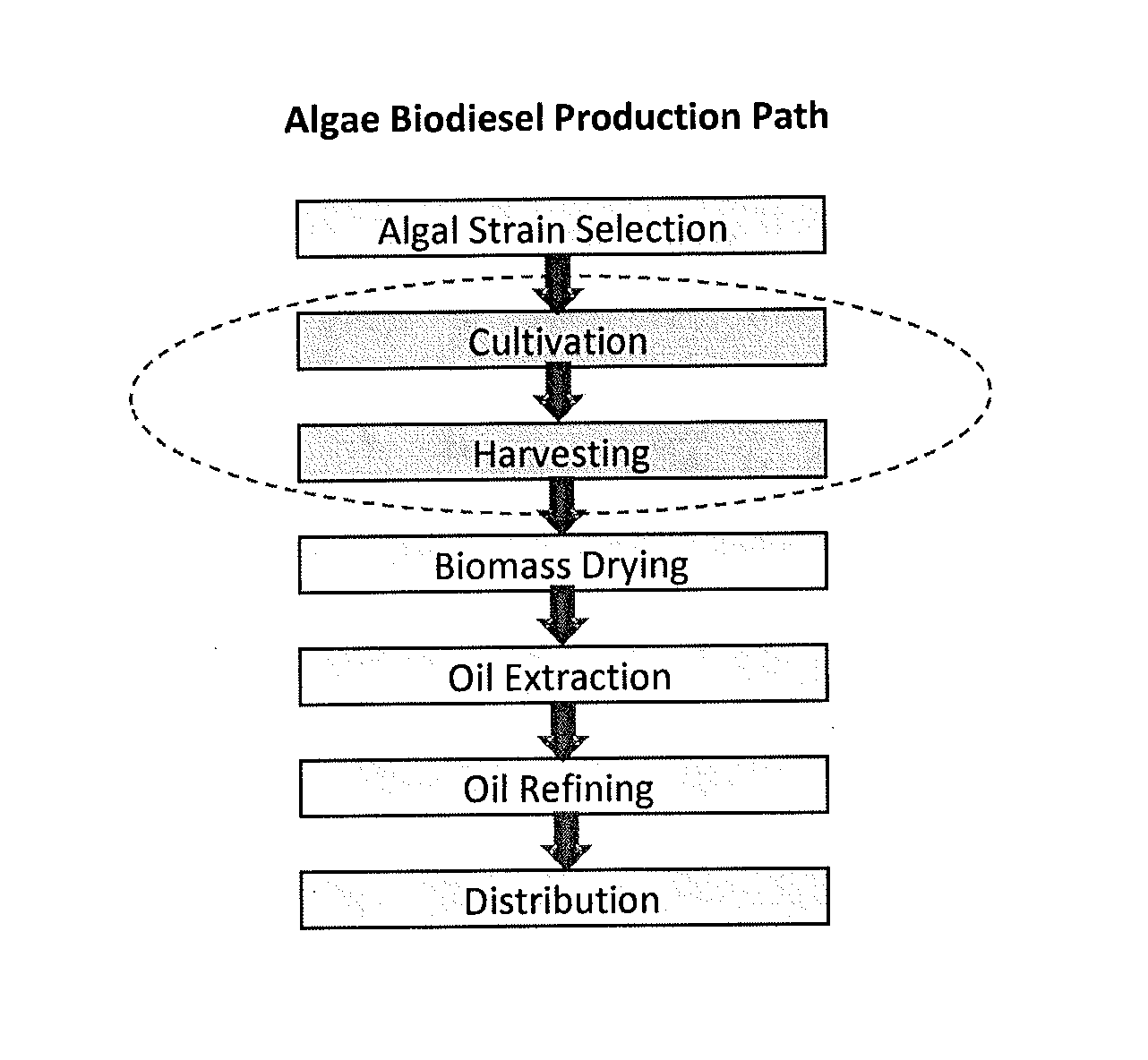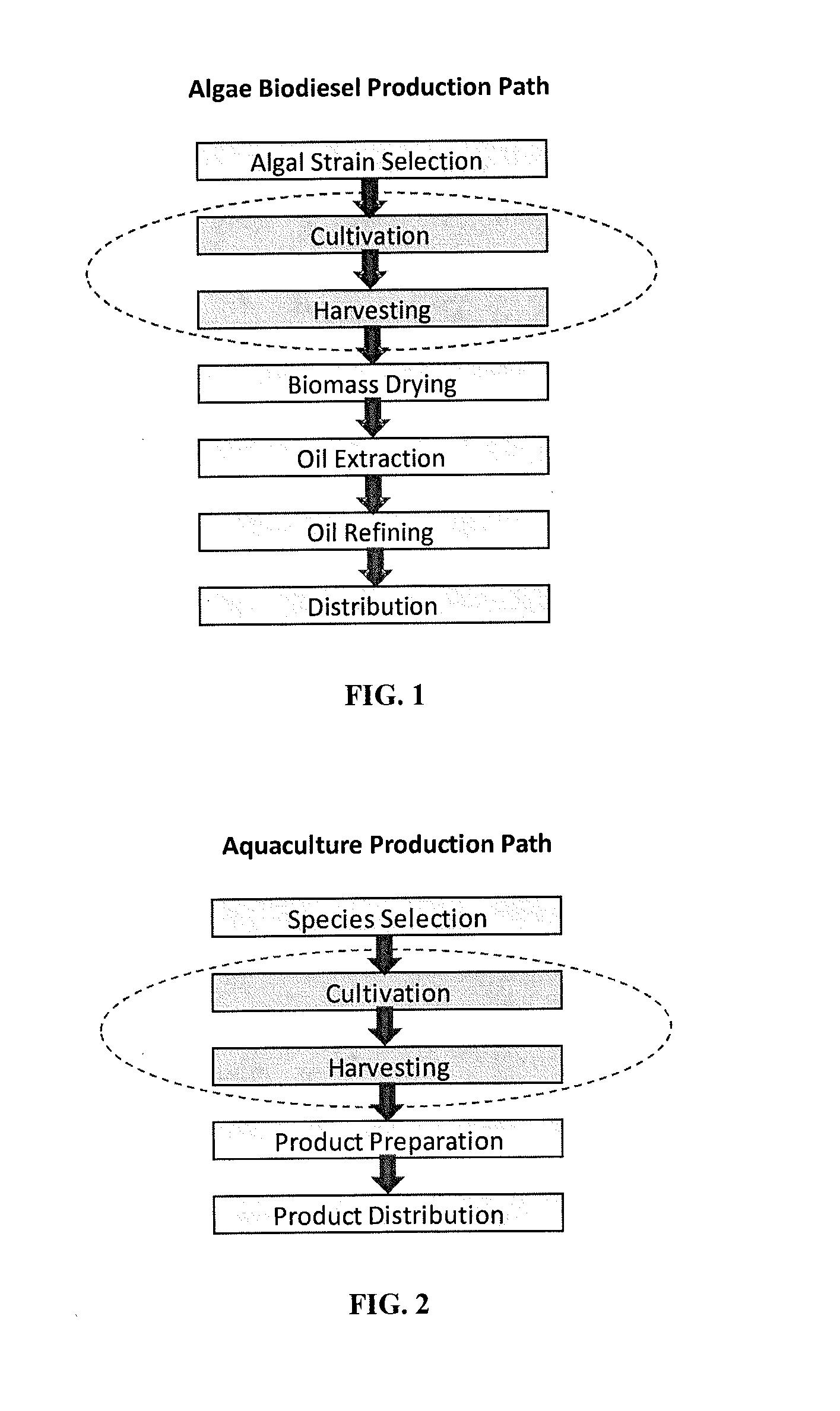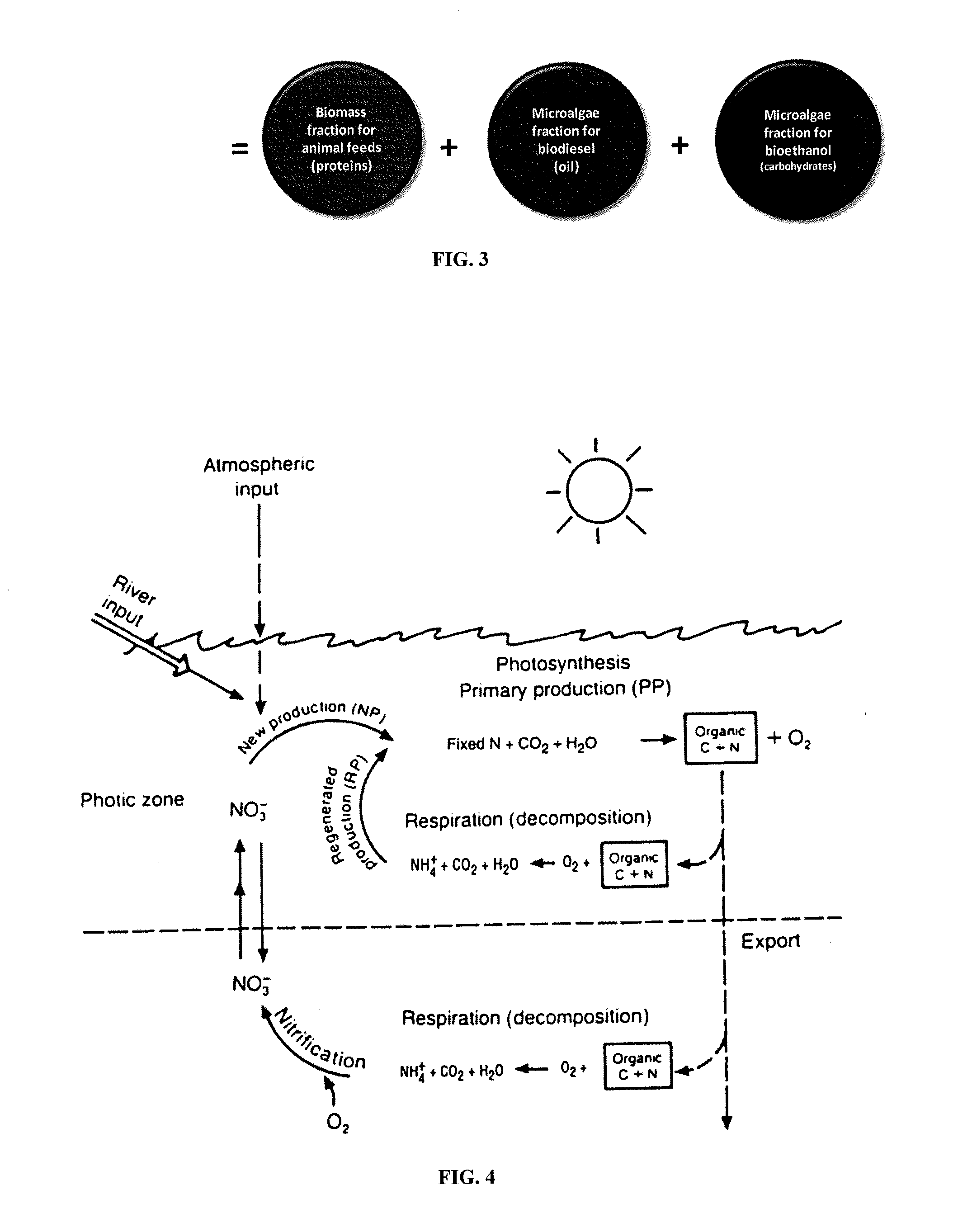Systems and methods for cultivating and harvesting blue water bioalgae and aquaculture
a bioalgae and aquaculture technology, applied in the field of large-scale algal biofuel and aquaculture development, can solve the problems of unsustainable demands on energy, water and nutrients, land-based biofuels are limited by available suitable agricultural acreage, etc., and achieve the effect of limiting the area of applicability, maximizing sun exposure, and avoiding leaching of limited nutrient resources from agricultur
- Summary
- Abstract
- Description
- Claims
- Application Information
AI Technical Summary
Benefits of technology
Problems solved by technology
Method used
Image
Examples
Embodiment Construction
[0029]As discussed briefly above, the present invention is directed to the utilization of deep ocean water and nutrient rich fresh water in the cultivation and harvesting of nutrients and CO2 for algae and other aquaculture species for the production of algal biomass and the like.
[0030]The estimated consumptive use of fresh water for producing 1 liter of gasoline equivalent of algal biofuel is 3.15 liters to 3,650 liters, depending on (a) whether the algae or cyanobacteria need to be harvested to be processed to fuels or if they secrete fuel products; (b) whether fresh water, inland saline water, marine water, or wastewater is used as a culture medium; (c) the climatic condition of the region if open ponds are used; and (d) whether the harvest water from algae cultivation is recycled. In other words, at least 123 billion liters of water would be needed to produce 39 billion liters of algal biofuels or an equivalent of five percent of U.S. demand for transportation fuels. The estimat...
PUM
 Login to View More
Login to View More Abstract
Description
Claims
Application Information
 Login to View More
Login to View More - R&D
- Intellectual Property
- Life Sciences
- Materials
- Tech Scout
- Unparalleled Data Quality
- Higher Quality Content
- 60% Fewer Hallucinations
Browse by: Latest US Patents, China's latest patents, Technical Efficacy Thesaurus, Application Domain, Technology Topic, Popular Technical Reports.
© 2025 PatSnap. All rights reserved.Legal|Privacy policy|Modern Slavery Act Transparency Statement|Sitemap|About US| Contact US: help@patsnap.com



